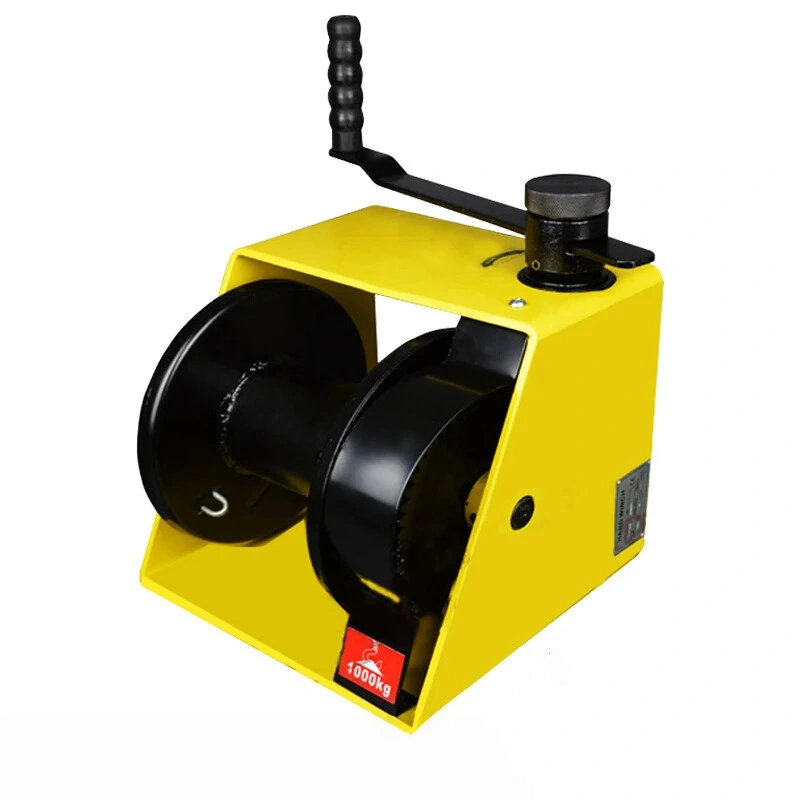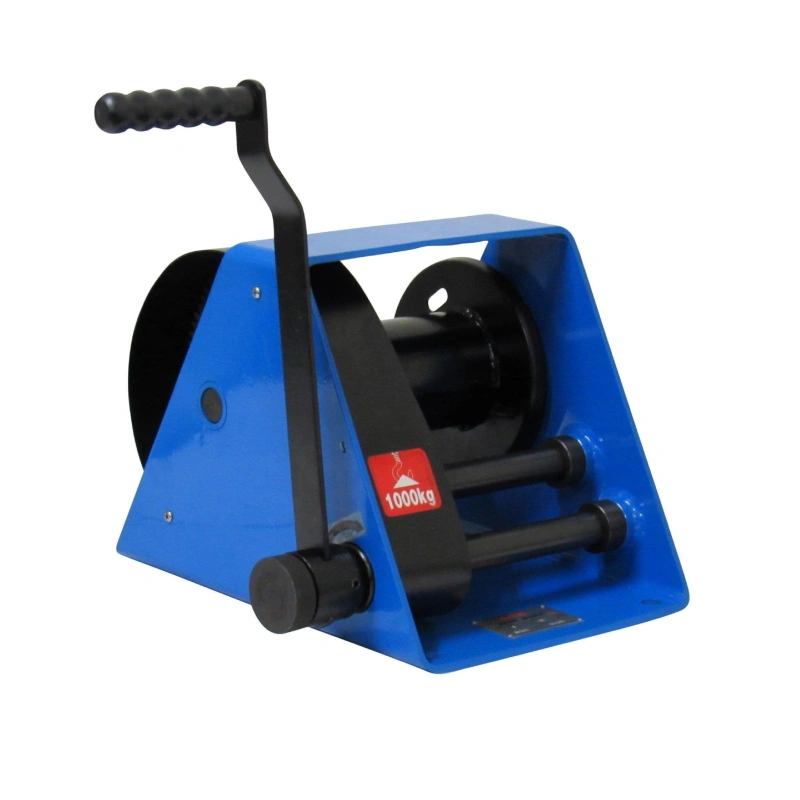You need to perform chain sling inspection using a systematic approach to guarantee safety and compliance at your job site. Proper inspection helps you avoid common violations, such as:
- Missing or unreadable sling tags mean you must remove the sling from service.
- Visible damage, including rips or excessive wear, can put your team at risk.
- Using chain slings incorrectly because you do not know the required identification or specifications.
By addressing these issues, you protect your operation and keep your equipment ready for use.
Key Takeaways
- Inspect chain slings before each use to catch issues early and ensure safety.
- Schedule periodic inspections based on usage and environmental conditions to maintain compliance.
- Use a detailed checklist during inspections to identify wear, cracks, or elongation.
- Document all inspections and keep records accessible for audits to demonstrate compliance.
- Employ qualified personnel for inspections to ensure safety and adherence to regulations.
Chain Sling Inspection Requirements
Regulatory Standards
You must follow strict standards when performing a chain sling inspection. OSHA and ASME set the main requirements in the United States. International standards, such as ISO and EN, also guide the inspection of alloy steel chain slings. The table below summarizes key regulations:
| Standard | Organization | Region | Inspection Frequency | Removal Criteria / Key Regulations |
|---|---|---|---|---|
| OSHA 1910.184 | OSHA | USA | Minimum every 12 months; more frequent in severe conditions | Missing identification, broken wires, distortion, heat damage, and damaged end attachments |
| ASME B30.9 | ASME | USA | Yearly for normal service; monthly to quarterly for severe service | Same as OSHA, with specific criteria for wire conditions and service recommendations from a competent person |
| ISO 1834/3076 | ISO | Global | As specified by the manufacturer | General requirements, dimensions, and mechanical properties for short-link chains |
| EN 818 Series | EN | Europe | As specified by the manufacturer | Detailed specifications for short-link chains for lifting purposes, including safety |
| ASTM A391/A973 | ASTM | USA | As specified by the manufacturer | Specifications for material properties and testing of Grade 80/100 alloy chain |
Powerful Machinery meets or exceeds all these standards, ensuring compliance and safety for your operation.
Types of Inspection
You need to understand the different inspection types for chain slings. Each type serves a specific purpose:
| Inspection Type | Definition and Criteria |
|---|---|
| Initial Inspection | Conducted by a competent person on new, altered, modified, or repaired slings before their first use. |
| Frequent Inspection | Performed before each use, especially for severe or special service applications, ideally by riggers and operators. |
| Periodic Inspection | Scheduled at least once every 12 months, but may be more frequent based on service severity and conditions. |
Tip: Always perform a thorough inspection when you receive new slings. Use a link-by-link inspection to check for damage or wear.
A thorough periodic inspection helps you catch issues early and maintain compliance with ASME standards.
Factors Affecting Inspection
Several factors influence how often you inspect chain slings:
| Factor | Description |
|---|---|
| Sling usage | Frequent use requires more inspections. |
| Working environment | Harsh conditions demand more frequent checks. |
| Sling service life | Older slings need closer monitoring. |
Regular inspection of alloy steel chain slings reduces risk and supports safe lifting operations. Powerful Machinery recommends you schedule inspections based on usage, environment, and sling age.
You protect your team and equipment by following these standards and using a competent person for every thorough inspection.
How Often Should Chain Slings Be Inspected?
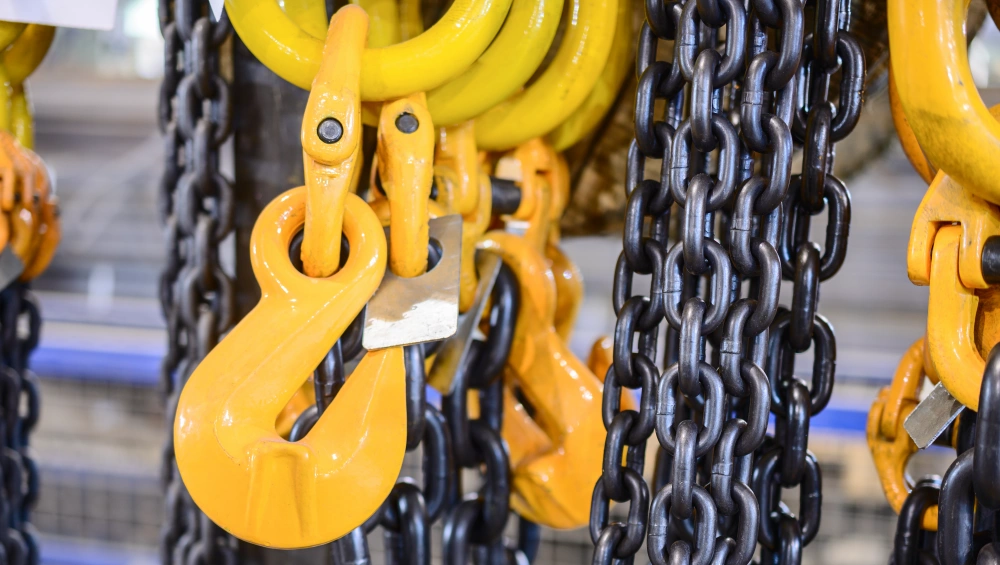
Pre-Use Inspection
You must inspect every sling before each use. This step helps you catch issues early and prevent accidents. According to OSHA 1910.184(d):
Each day before being used, the sling and all fastenings and attachments SHALL be inspected for damage or defects by a competent person designated by the employer.
Start by checking the identification tag for the correct load capacity and manufacturer details. Lay the sling flat and clean it for a clear view. Look for excessive wear, cracks in the weld area, or severe corrosion. Remove the sling from service if you find any of these problems. Always keep a record of your inspections.
Periodic Inspection
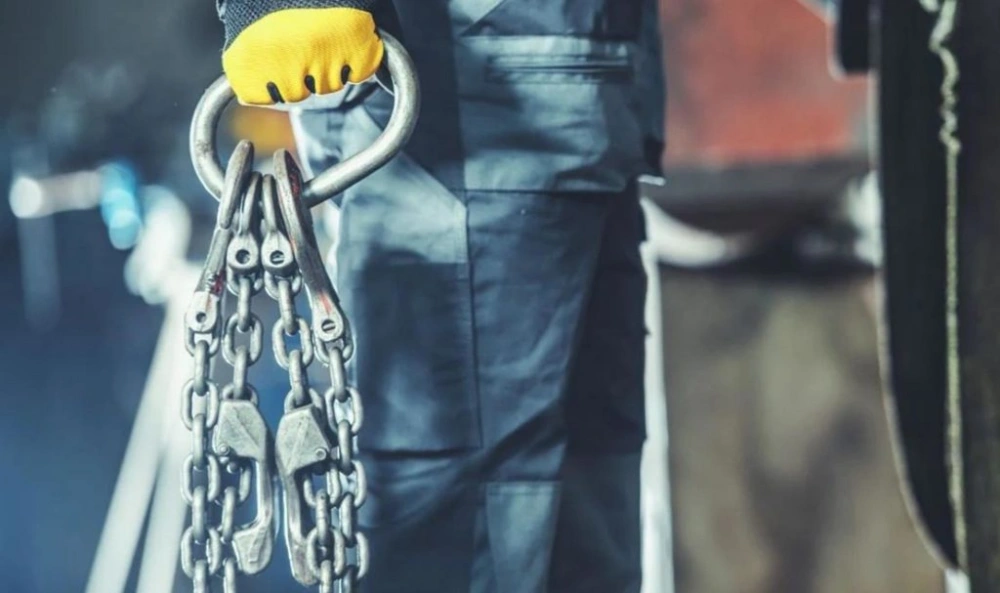
You need to schedule a periodic inspection based on how often you use your chain slings and the environment they operate in. For normal service, plan an annual inspection. If you use slings in harsh or severe conditions, increase the frequency to every three to twelve months. Use the table below for guidance:
| Service Condition | Inspection Frequency |
|---|---|
| Normal Service | Yearly (Annual Inspection) |
| Severe Service | Monthly to Quarterly |
| Special Service | As recommended by a Qualified Person |
A certified inspector should perform these checks. Document each periodic inspection and remove any sling that shows signs of wear, cracks, or severe corrosion.
Comprehensive Inspection
A comprehensive chain sling inspection goes beyond a basic visual inspection. You or a qualified inspector must check for elongation, inspect all attachments, and verify that identification marks remain clear. The table below outlines the differences:
| Inspection Type | Procedures Involved | Frequency |
|---|---|---|
| Comprehensive Inspection | Thorough visual check, check for elongation, inspect attachments, and ensure proper identification marks | Less frequent |
| Routine Checks | Basic visual inspection, quick checks for obvious damage | More frequent |
Follow manufacturer guidance for inspection intervals. Powerful recommends that you always use a competent person for every inspection and keep detailed records to ensure compliance and safety.
Chain Sling Inspection Procedure
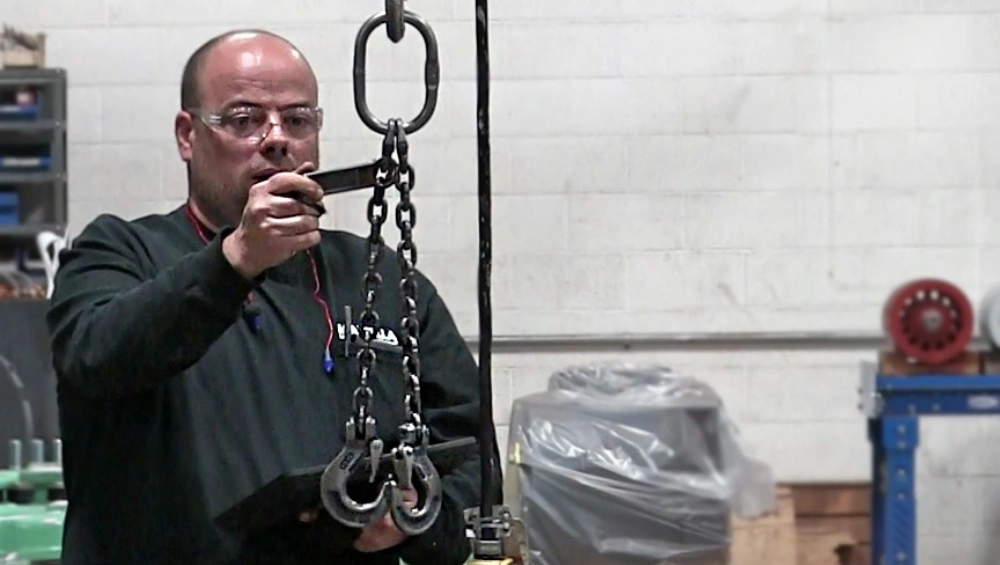
Preparation Steps
Before you begin any chain sling inspection, you must set up the process for accuracy and safety. Follow these steps to prepare:
- Confirm that you and your team have the proper training and qualifications for chain sling inspection.
- Gather all necessary tools, such as micrometers, gauges, and visual inspection aids.
- Wear the required personal protective equipment (PPE), including gloves, safety glasses, and hard hats.
- Review the sling’s certification, maintenance records, and previous inspection reports to understand its history.
- Make sure your inspection checklist is current and complete.
- Set up a safe work area, free from unnecessary personnel and obstacles.
Tip: Preparation is the foundation of a reliable inspection schedule. When you follow these steps, you reduce the risk of missing critical issues and ensure that all findings are registered and documented.
Visual and Dimensional Checks
You must perform a thorough visual inspection and dimensional check on every chain sling. Use this checklist to guide your process:
- Examine the master link for any signs of collapse, elongation, twisting, or distortion. These changes often indicate overload or improper use.
- Inspect all coupling components. Check that pins and retainers are present, secure, and free from corrosion or seizure.
- Assess the condition of the chain. Look for wear, elongation, and ensure each link flexes freely. Identify any bent or notched links.
- Review the chain shortener or clutch. Confirm there is no misuse, distortion, or compromised connections.
Note: Powerful Machinery designs chain slings to meet strict dimensional and quality standards. Our products undergo rigorous testing to ensure they perform reliably in demanding environments.
Defect Identification
During inspection, you must identify and address any defects or damage immediately. The table below lists common issues and the required actions:
| Common Defects Identified | Actions to Take |
|---|---|
| Wear | Remove from service immediately |
| Defective welds | Remove from service immediately |
| Nicks, cracks, breaks | Remove from service immediately |
| Gouges | Remove from service immediately |
| Stretch | Remove from service immediately |
| Bends | Remove from service immediately |
| Discoloration due to heat | Remove from service immediately |
| Excessive pitting/corrosion | Remove from service immediately |
| Throat opening of hooks | Remove from service immediately |
| Missing/illegible identifications | Remove from service immediately |
| Other unsafe conditions | Remove from service immediately |
You may encounter challenges such as identifying subtle wear or hidden damage. Regular inspections help you catch these issues early. Always use proper handling techniques and protect slings from harsh environmental factors to prevent corrosion and extend service life.
Powerful Machinery’s inspection expertise ensures that every chain sling meets or exceeds industry standards. Our commitment to quality helps you maintain safe lifting operations and avoid costly downtime.
Inspection Certificate and Documentation
Certification Process
You must ensure every chain sling inspection is registered and documented to meet regulatory requirements. After each inspection, you receive a certificate that confirms the sling has passed all checks and meets ASME standards.
This certificate should include the date, inspector’s name, sling identification, and results. You must keep this certificate available for review during audits or site visits. The table below summarizes the main documentation requirements:
| Documentation Requirement | Source |
|---|---|
| Periodic inspections must be documented and records retained as per ASME B30.9 | Mazzella Companies |
| Employers must maintain a record of the most recent thorough inspection | Mazzella Companies |
| A record of each inspected sling is required per OSHA 1910.184 | Mazzella Companies |
| Employers must retain a certificate of the proof test | eCFR |
| The certificate must be available for examination | eCFR |
You demonstrate compliance by keeping these records up to date and accessible.
Recordkeeping
Proper recordkeeping is essential for compliance and safety. You should keep detailed records of every inspection, training certification, and maintenance activity. These records help you prepare for regulatory audits and support operational safety. Best practices include:
- Store all inspection certificates and reports in a secure, organized system.
- Use digital tools or RFID technology to track inspection dates and results.
- Ensure records are easy to retrieve for OSHA or other regulatory reviews.
- Keep documentation for each sling, including proof tests and maintenance logs.
Digital recordkeeping allows you to collect data in real time and share it with your team. This approach reduces errors and speeds up your response to any issues.
Qualified Personnel and Third-Party Services
You must use qualified personnel for every chain sling inspection. A trained user should inspect chain slings before each use. A competent person must perform annual inspections and issue certifications. The table below outlines the required qualifications:
| Qualification Type | Description |
|---|---|
| Trained User | Must inspect chain slings before use. |
| Competent Person | Must conduct inspections at least once annually. |
Third-party rigging inspection services provide impartial and accurate evaluations. These services focus only on the physical condition of your equipment, free from outside influence. Powerful Machinery offers expert inspection and certification services.
Our team follows ASME and international standards, ensuring your chain slings meet all compliance requirements. We help you maintain consistency and reliability across all your sites.
Conclusion
To maintain safety and compliance, follow these best practices for chain sling inspection and certification:
- Inspect your sling before each use and schedule periodic checks based on service conditions.
- Use a detailed checklist to spot wear, cracks, or elongation.
- Remove any sling with signs of damage or missing identification.
Qualified personnel and accurate records help you avoid regulatory issues and keep your team safe.
| Non-Compliance Consequence | Impact |
|---|---|
| Missed inspections | Increased legal liability |
| Using damaged slings | Higher risk of accidents |
| Poor documentation | Regulatory violations |
Review your inspection procedures regularly or consult Powerful for expert support.
FAQ
How do you know when to remove a chain sling from service?
You must remove a chain sling if you see cracks, excessive wear, stretched links, or missing identification. Always follow OSHA and ASME removal criteria. When in doubt, take the sling out of service and consult a qualified inspector.
Who can perform a chain sling inspection?
A trained user should inspect slings before each use. A competent person must complete periodic inspections. For certification, you can use third-party experts like Powerful Machinery. Qualified personnel ensure your inspections meet all safety and compliance standards.
What records should you keep after an inspection?
You should keep inspection certificates, maintenance logs, and proof test records. Store these documents in a secure and organized system. Digital records help you track inspection dates and results quickly.
How often should you replace a chain sling?
Replace a chain sling when it fails inspection or shows signs of damage. There is no set lifespan. Regular inspections help you decide when replacement is necessary. Always follow manufacturer recommendations.
Can you repair a damaged chain sling?
You should never repair a chain sling yourself. Only qualified professionals or the manufacturer can repair or recondition slings. Using an unapproved repair puts your team at risk and violates safety standards.

